See also:
- Taiwan Part Two: Natural Wonders
- Taiwan Part Three: A Step Back in Time
- Taiwan Part Four: Urban Legends
Special thanks to Nick Kembel, whose guidance was indispensable in putting this trip together. His site, Taiwan Obsessed, is the ultimate reference for planning a Taiwan trip.
Quick Update: How I got to Taiwan
Since my last article, Cream and I lived in Koh Phangan, Thailand, before moving north to her hometown, Chiang Mai. From there, we each applied for and received 1-year working holiday visas to Australia.
We sandwiched our Taiwan trip en route, flying to Melbourne from Taipei. We also visited Okinawa, Japan, on this trip, which I’ll save for a separate article.
Once upon a rainy Chiang Mai morning at the end of September 2023, we boarded a mostly empty flight with China Airlines – Taiwan’s national carrier – and landed in Taipei a few hours later.
Day 0: First Tastes of Taipei
Ningxia Night Market
We reached the city center with rumbling tummies and walked to Ningxia Night Market shortly after checking into our hotel. This market was featured in the Midnight: Asia series on Netflix, which you may have seen. If not, I highly recommend it for its 30-minute highlight reel featuring Taipei’s culture, hospitality, and nightlife.
As we approached the market, the quiet streets suddenly transformed into an uber-crowded bustle.
The flow of stimuli cranked up to a firehose. Pans clanked. Vendors shouted their offers. Thousands of people chatted while standing and munching around the fringes. Thick, indulgent smells of frying and stewing filled the air. We soaked in the excitement of this new, different place. We filtered into one of the market’s two narrow, single-file walkways, with food stalls on each side.
Cream and I encountered so many new varieties of delicious-looking food and we hungrily perused the offerings with growing anticipation. We whet our appetites with some refreshing watermelon juice and familiar takoyaki – Japanese fried octopus balls topped with bonito flakes, seaweed, and sweet black sauce.
“Please come stand over here,” the young vendor said with a smile as he began preparing the takoyaki. We snaked around the side of the stall, resuming the flow of traffic through the crowded lane.
After munching down our snacks, we re-entered the current and continued browsing. Fish soup. Minced meat omelets. Freshly squeezed orange juice. Grilled shrimp. Noodles in gravy. Fried tofu. Dumplings. Ice cream. Sausage skewers. Everything looked tasty, but for another time – these weren’t on tonight’s menu.
A row of huge golden fried squid sticks seemed to gesture at us from afar. Bingo. It was probably the best squid I’ve ever had, so tender that it practically melted in the mouth. Further along, the rich scents of sausage wrapped in scallion pancake forced me to another mouthwatering halt, yielding to the perfectly balanced salty and savory flavors.
How about something sweet? No need to ask twice. There was no shortage of desserts, but we wanted something that we hadn’t tried before. We sat at a small table by a stall serving freshly steamed mochi rolled in peanut powder over crushed ice. It was gooey and chewy and wonderfully highlighted the delicious peanut flavor.
When the food is this good, there’s only one way to celebrate: more. I made a victory lap with a stewed pork bun. Soft, sweet bun? Check. Tender, flavorful meat? Check. Smooth, fragrant garnish? Check. Giddy Andrew? Oh yeah.
Fully satisfied, we picked up some guava juice to sip on the way home that was refreshing and not overly sweet.
Day 1: Taipei Day Trip to Houtong, Jiufen, and Keelung
View all Taipei Surroundings photos
Although it’s a relatively small country, Taiwan is packed with awesome sites, and 10 days is hardly enough time to see everything. In the month before we arrived, I planned our itinerary carefully so that we could hit the ground running. We were up early on our first full day to catch a train.
Houtong Cat Village
Houtong is a tiny town nestled in the mountains about an hour east of Taipei. It’s famous for its Cat Village, located on a hill behind the train station. Dozens of friendly strays wander the cat-themed area, filled with cat cafes, fun souvenirs, and cute decorations.
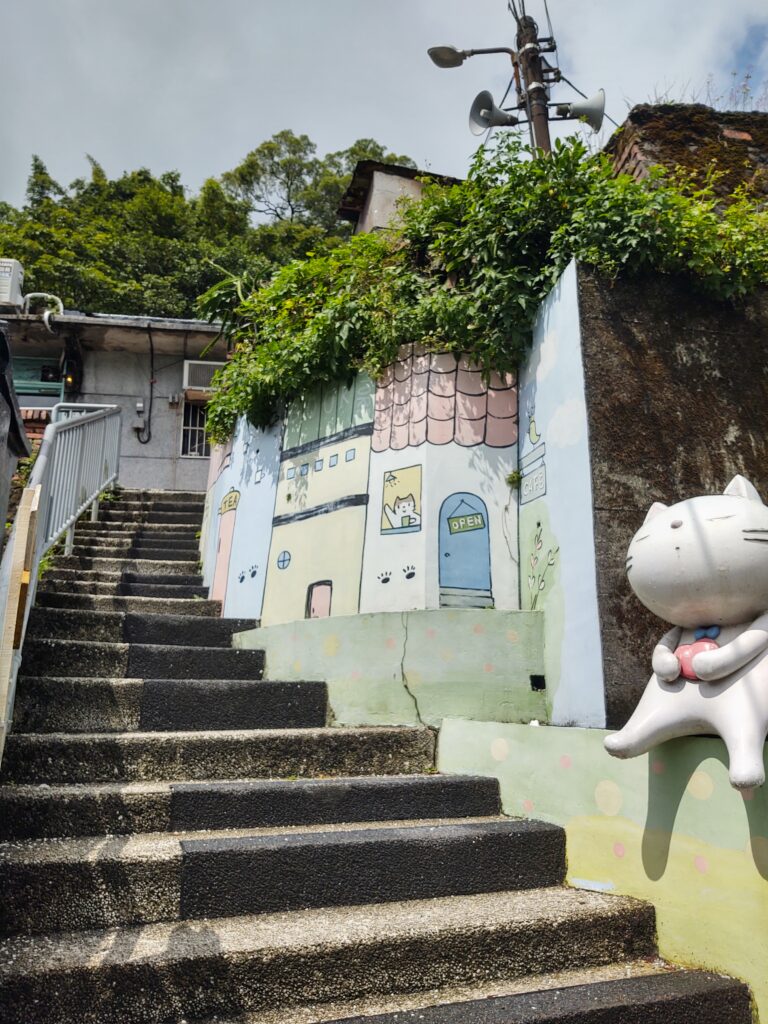
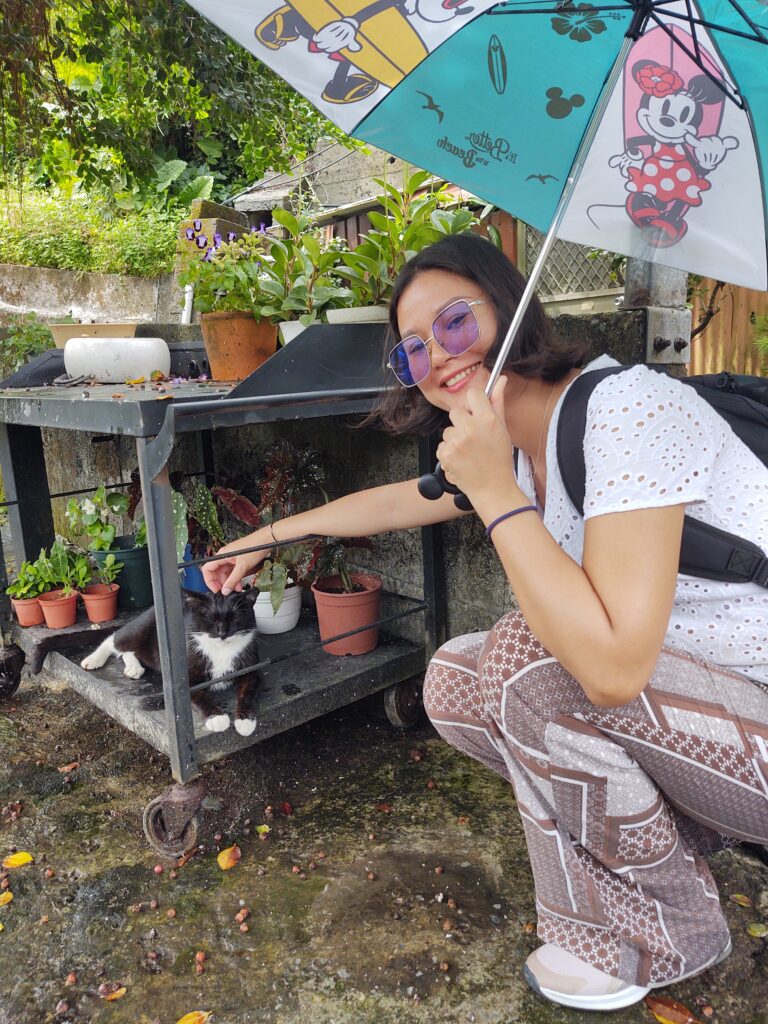
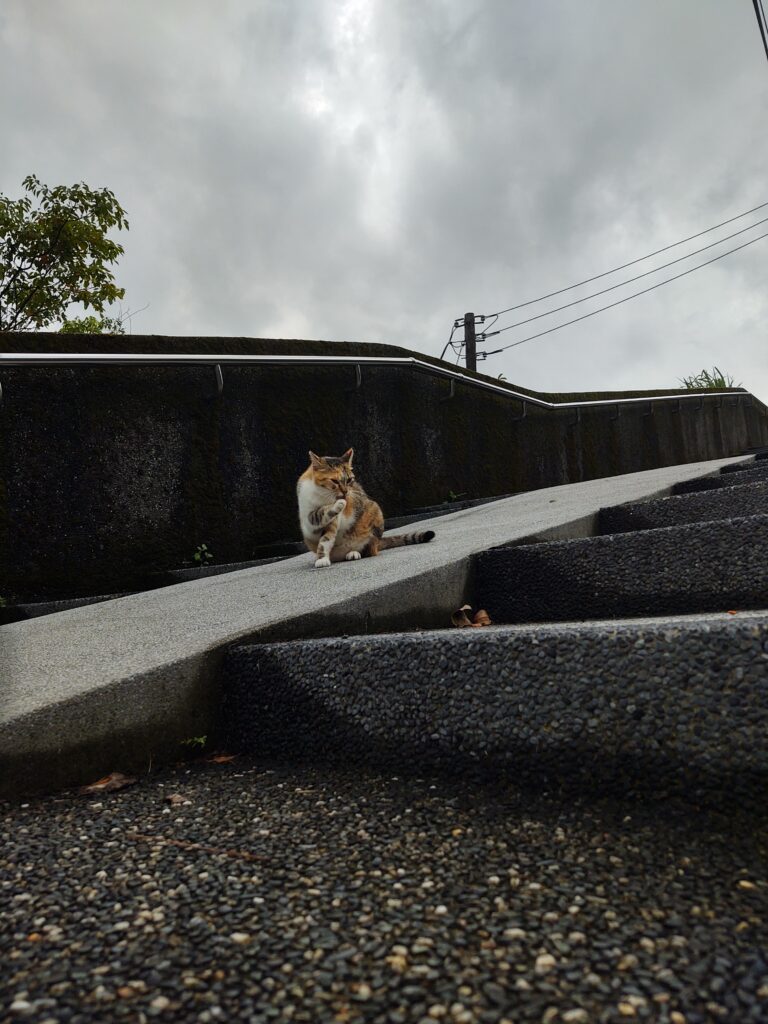
Cream and I are cat people and we were already missing our two at home, so naturally, this was our first stop. There was a light drizzle when we arrived and not too many felines were out and about. Instead, we wandered over to a cat cafe and had some really good coffee while we played with a furry friend.
The rain stopped by the time we left the cafe, so thankfully, we got to hang out with tons of cool cats and take some fun photos as we explored the village. My favorite was an orange tabby who appeared to have taken over a house, soaking up the sun on a TV by the door – completely content.
Before catching the next train, I grabbed some tasty looking dumplings from a small stand in the main village area. Exquisitely fresh, they were some of the best dumplings I’ve ever had.
Jiufen
A small, former gold-mining town with a great view over the coast, Jiufen is one of Taipei’s most popular day-trips.
The mountainside village is best known for Jiufen Old Street. The charming narrow street market is densely lined with shops, snacks, and treats all the way through town, housed in historic buildings and sprinkled with teahouses and museums.
At lunchtime, we stepped into a busy restaurant for some noodle soup with fish meatballs, braised noodles, and stir-fried morning glory – all light, yet packed with salty, savory flavors.
Next we grabbed a sweet peanut ice cream roll from A-Zhu, a famous shop. It was refreshing against the hot weather. We also tried some grilled king oyster mushrooms – we had never seen these before, but the vegetarian-friendly barbeque option looked interesting, with great texture and flavor.
Shops handed out samples of sweets and traditional Taiwanese teas, including our first tastes of the famous Alishan High Mountain Tea, one of the world’s finest black teas. We also grabbed a bubble tea – everyone’s favorite Taiwanese drink – at Xing Fu Tang. We watched them cook the hot bubbles in the front of the store, still warm and chewy, wonderfully contrasted against the cold tea.
A-Mei Tea House
Of all the unique buildings in Jiufen, surely the most celebrated is the colorful A-Mei Tea House. It looks like it’s straight out of Miyazaki’s Spirited Away, though the animator denied any connection.
The tea house was built in Japanese style (Taiwan was ruled by Japan in the first half of the 20th century), and crowds gathered around for photos in front. Nearby, shops sold plush toys of the film’s ghosts.
A staircase curiously led up and away from the Old Street’s crowds. We hiked a few minutes to the top where we were rewarded with sweeping views over the coast from a beautiful, quiet temple.
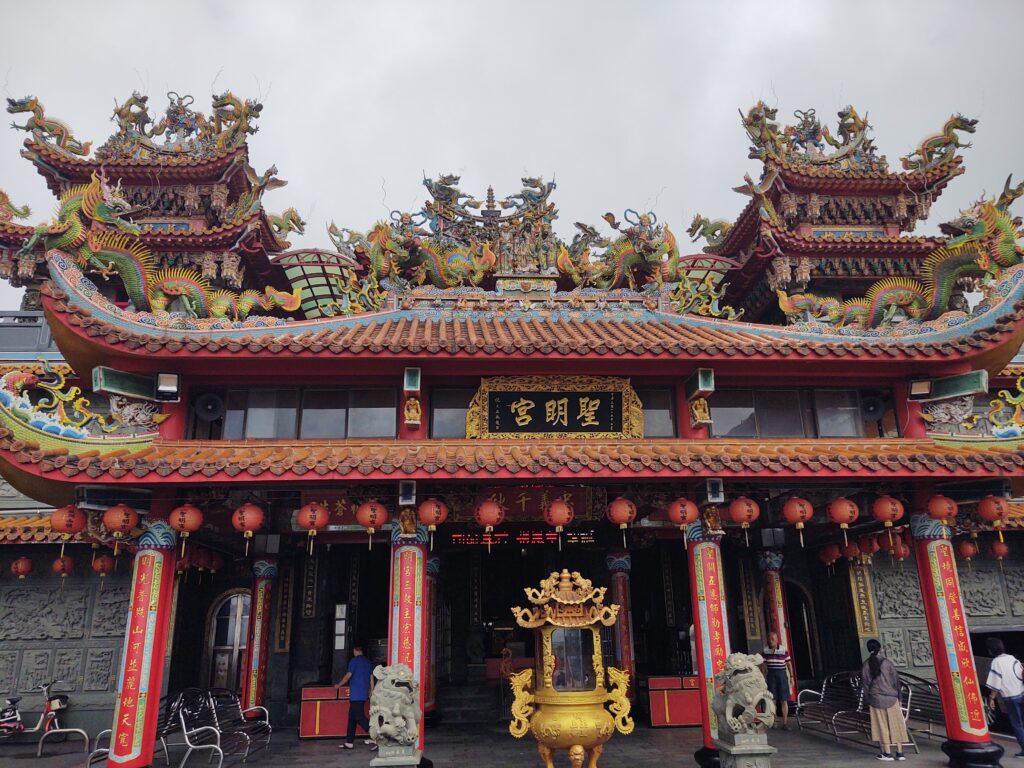
Keelung
Up the coast from Jiufen, Keelung is a major city northeast of Taipei, home to Taiwan’s second biggest port.
We made our way to the Zhengbin colored houses, a cute and photogenic spot that’s become Instagram-famous in Thailand. We arrived shortly before dark and admired the buildings from across the inlet before heading back into the city center.
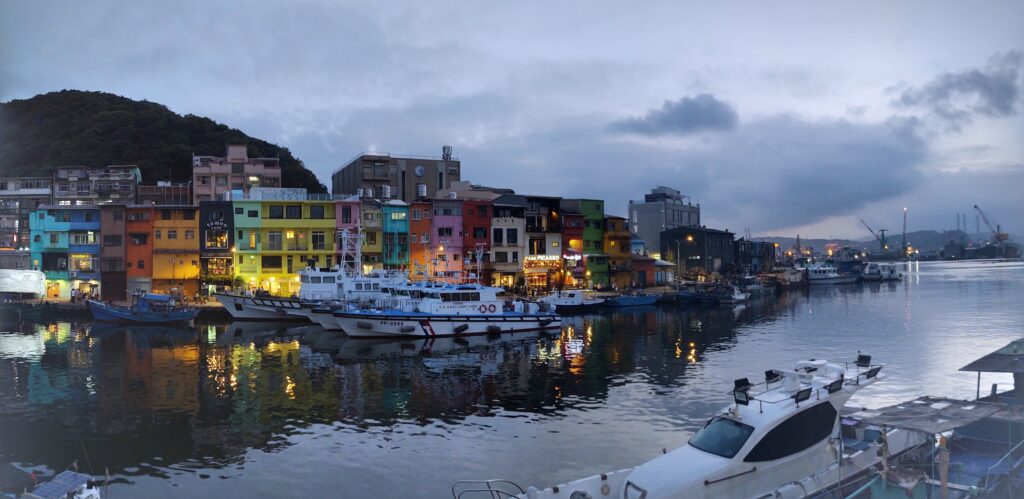
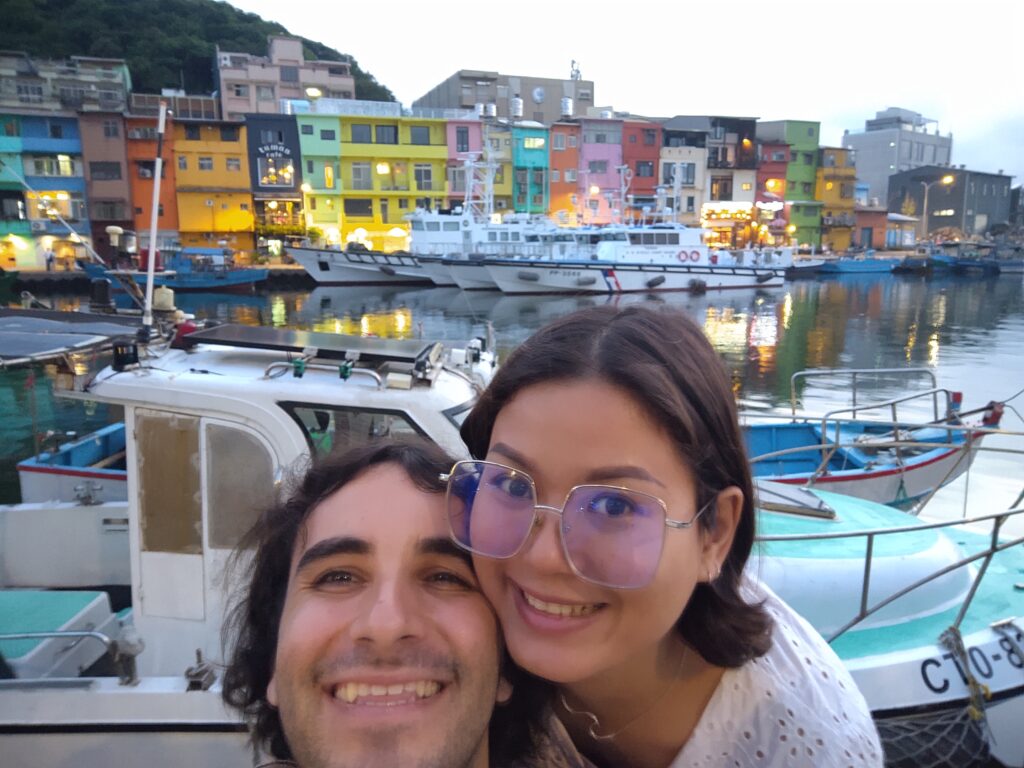
For dinner, we went for round two at the local night market. Keelung Night Market was enormous – and the trademark corridor of yellow lanterns was just the beginning. Stalls branched out along several other streets in every direction. A temple stood in the middle of this hectic and crowded scene; locals quietly wandered in to pray.
This time, we opted for some thick and tasty fish curry over rice and got in line for some salty seafood buns, which they cooked right in front of us. A light yet flavorful veggie wrap hit the spot with excellent textures before we picked up some crunchy mixed fried seafood. It was good, but couldn’t beat the previous night’s squid, our reigning champion.
It was getting late and we made our way home.
Day 2: Taipei City
First thing in the morning, we headed to a Taiwanese breakfast restaurant. What is Taiwanese breakfast, you ask? I wondered the same.
I had an egg scallion pancake combo with some sort of gelatinous radish cake and soy sauce that was really yummy. Cream munched on a tuna and egg sandwich, which was surprisingly delicious – it perfectly balanced meaty, salty, and crunchy flavors. We paired it with smooth and fresh soy milk and milk tea. The whole meal was simple, but flavorful, for about $5 USD total.
Chiang Kai Shek Memorial Hall
We hopped on a subway to Chiang Kai Shek Memorial Hall, one of Taiwan’s most iconic buildings and a national symbol.
Taiwanese History Crash Course
In case you’re not familiar, Chiang Kai Shek was a Chinese noble who resisted the communist revolution in 1940s China. He led the opposition party, called the Kuomintang, that eventually fled mainland China and took over Taiwan, which is formally known as the Republic of China. Politics between the “two Chinas” is still quite controversial and often bitter.
A question I’m asked frequently is: Is Taiwan safe, given the situation with mainland China? I’m not an expert, but I can attest that during our visit, we didn’t notice even an ounce of tension. It’s true that mainland China is threatening to invade, but they’ve been threatening that for generations, so perhaps everyone’s gotten used to it. Taiwan felt completely safe, but in light of recent global events, it’s sobering to reflect on other possibilities.
Anyway, the huge Chiang Kai Shek Memorial complex was stunning. We meandered from the Liberty Gate into the giant courtyard and strolled by the marvelous National Theater and National Concert Hall buildings on either side, each with enormous yellow tile roofs.
The elegant white marble main hall rose majestically above the courtyard. An enormous Chiang Kai Shek statue calmly sat under its legendary octagonal blue dome.
Ximending
Next stop: Ximending.
We headed into the large pedestrian-only street grid that forms Taipei’s trendiest downtown area, filled with shops and vibrant lights.
We did some shopping and grabbed some savory xiaolongbao, also known as soup dumplings. These dumplings are one of Taiwan’s most popular and delicious dishes. They’re also outrageously hard to find in the U.S. Full of soup and pork, they can be eaten by biting the top and then sucking the soup out, or in one whole, explosive bite. We also had a sweet lychee iced tea to cool off in the oppressive afternoon heat.
We stopped into a small tea house for a quick bite. I got a rice ball filled with kimchi and a tea egg – that is, a hard-boiled egg cooked in tea. They’re super popular in Taiwan. To me, it was kind of an odd flavor and just okay. To be fair, I don’t really like hard-boiled eggs in the first place. We sipped on some crisp and tasty earl gray milk tea with pearls.
We wandered a bit further to Bopiliao Historic Block, one of the first areas developed in the city, with several neat buildings dating from the 1700s with interesting brickwork. The design was intentionally preserved during the Qing dynasty and Japanese colonial period so that it still feels the same today as it did hundreds of years ago.
A quick bowl of wonton shrimp noodles from a small shop made for another satisfying snack before we kicked back another refreshing iced lemon oolong tea and headed to another of Taiwan’s most important sites.
Longshan Temple
During World War II, Longshan Temple was almost completely destroyed by bombings – except the Buddha statue inside, which was left untouched. It was a miracle, and the temple has been a proud national symbol ever since it was rebuilt.
After walking around inside for a bit, Cream and I visited the information desk, where a sweet older woman offered to give us an impromptu tour. She gave a quick overview of the different symbols and decorations. “Actually…” she paused. “Do you have a minute to go around together?” Of course we do!
Our guide brought us over to the first altar, where she enthusiastically showed us how to pray with Taiwanese moon blocks. These two crescent-shaped, wooden blocks are found in every temple, and it’s thought that the gods use them to communicate answers to prayers.
How to Pray with Moon Blocks – A Quick Guide
- Tell the gods your name, your age, and your address. That last one is important because a lot of people have the same names in Taiwan and the gods need you to be specific.
- Randomly select a stick from a basket. Each stick has a number on it.
- Toss the two blocks. The goal is to get the blocks in harmony, with one facing up and the other facing down.
- If the blocks aren’t in harmony, select another stick and try again – but not more than three times, lest you start annoying the gods with your persistence!
- A harmonious block tossing confirms the number on the stick. The number corresponds with a horoscope you can collect – the answer to your prayer.
We continued walking around the temple, with our guide explaining the significance of the statues, carvings, and gods along the way. She noted how the front of Longshan Temple is Buddhist, while the back is Taoist, making it unique. Everyone prays to different deities to help them with different challenges. A young crowd of students gathered by the God of Literature; expecting mothers were supported by a trio of fertility goddesses; and couples held hands as they bowed to the God of Love.
Like all Taiwanese temples, Longshan Temple is an integral centerpiece of the community. Despite the temple’s fame, it’s refreshing to see it is frequented by both locals and tourists in harmony.
Our guide was very helpful, cheerful, and spoke good English. When we asked, she said she didn’t accept any tips; she volunteers there and loves sharing the culture with visitors. She’s just one of many examples of Taiwanese people being incredibly sweet and hospitable.
A Fun Story about Amulets
It’s common for temples in Taiwan to sell amulets. Amulets are like good luck charms and serve different purposes, such as bringing love, wealth, happiness, or health into one’s life.
One of Cream’s best friends used to live in Taiwan, and she once gifted Cream a small red love amulet, purchased from Longshan Temple.
Cream and I met shortly after that. I still remember the amulet – a red string bracelet she wore on our first date. It mysteriously disappeared a few weeks later; neither of us knows where it went. But perhaps it was no longer needed, its purpose served, and it faded away.
In the West, we might call this superstition, but in Taiwanese and other Asian cultures it’s common to believe in forces beyond our comprehension, and to do what one can to appeal to those forces. And what better place to do so than at one of the most important temples in Taiwan?
Anyhow, Cream purchased another amulet before we left, this one for prosperity once we arrived in Australia.
Onward to Hualien
In the late afternoon, we returned to Taipei Main Station and hopped on a 2.5-hour express train to Hualien on Taiwan’s east coast. We spent the night there before catching a tour early the next morning.
The next day, we visited Taroko Gorge – one of Taiwan’s most sublime natural wonders – which I’ll tell you about in Part Two.
See you there,
Andrew
P.S. It never ceases to amaze me how many people actually read these articles. It’s one of the first things my friends have been commenting on when I see them. So, I just wanted to say, thank you for joining this adventure. These are some of my most cherished memories and sharing them brings me a lot of joy. I really appreciate your listening!
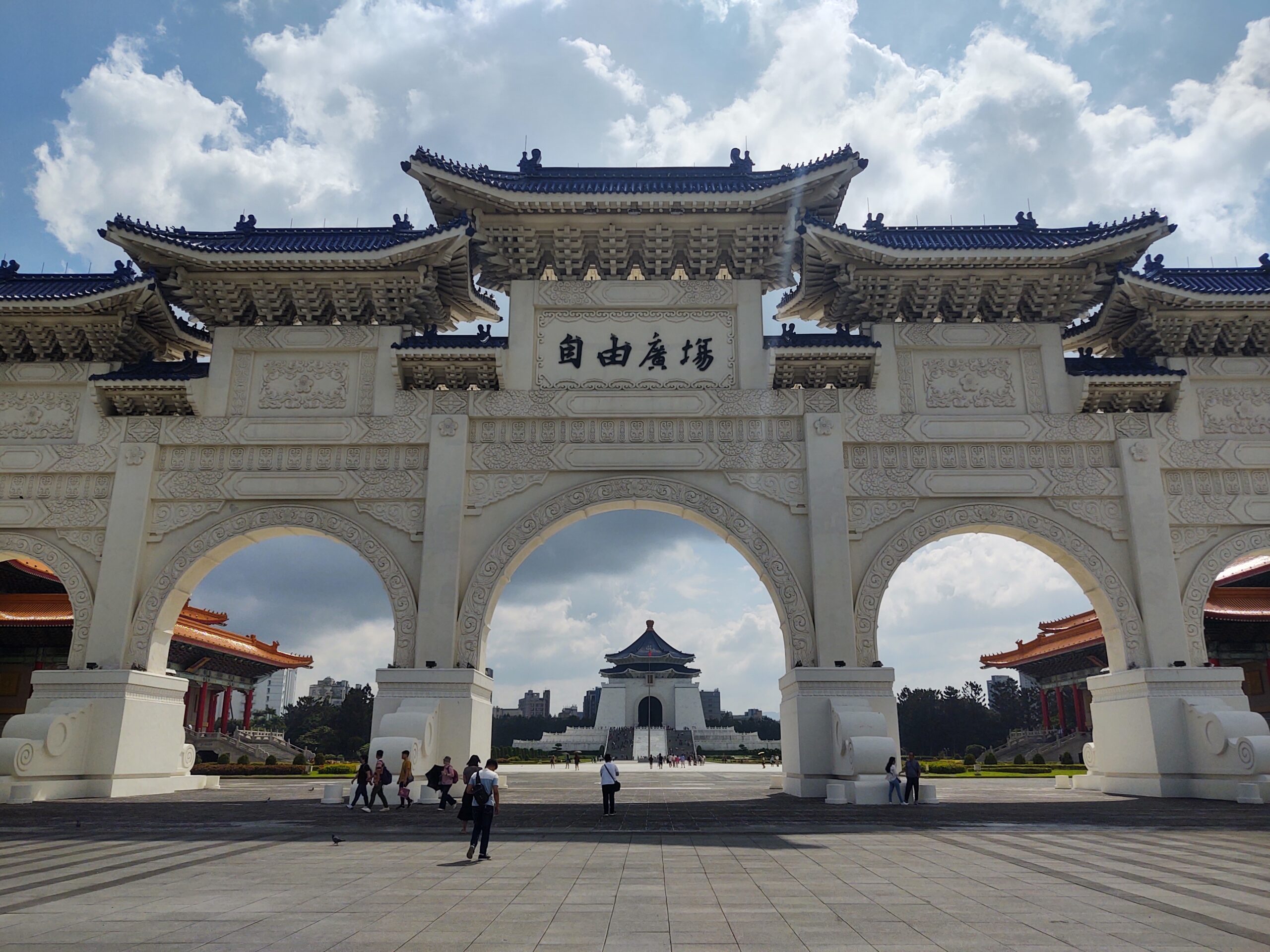
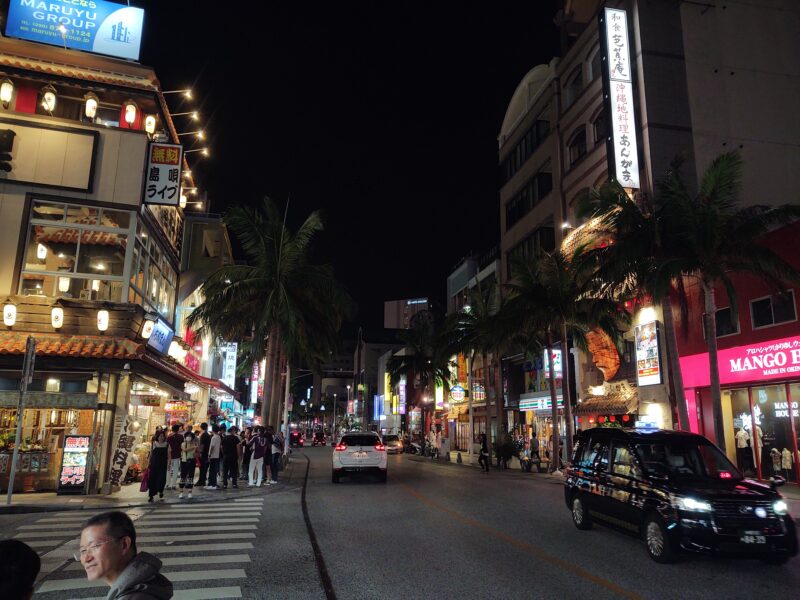
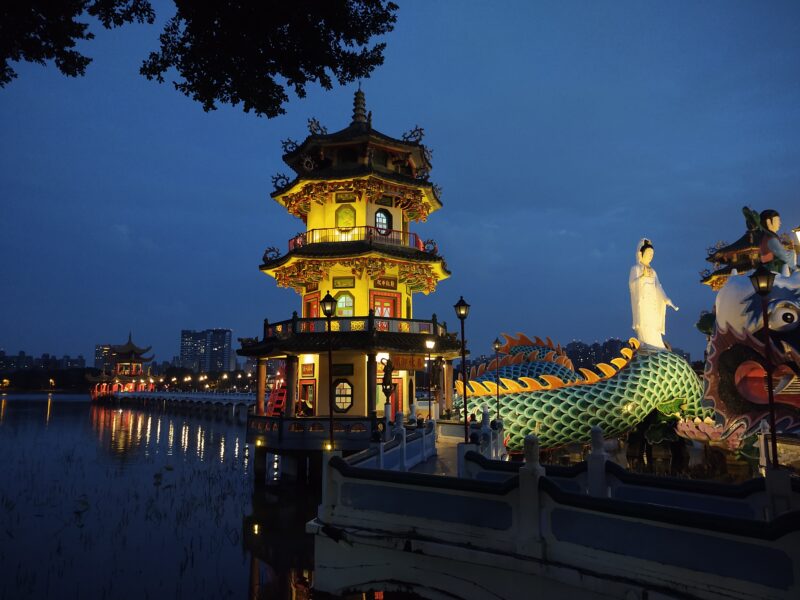
One thought on “Taipei Rush – Taiwan, Part One”